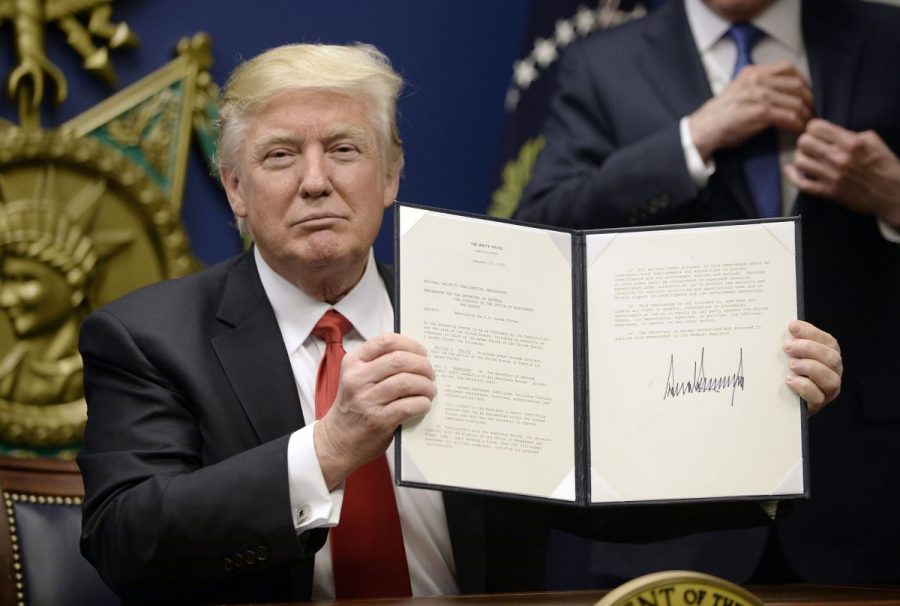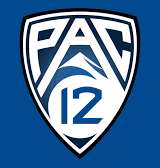Read the Executive Order Yourself
(Olivier Douliery/Abaca Press/TNS)
US President Donald Trump signs Executive Orders in the Hall of Heroes at the Department of Defense Friday, Jan. 27, 2017 in Arlington, Va.
February 14, 2017
The views expressed in this piece are solely those of the author. The Outlook Newspaper encourages audience responses to be submitted to [email protected]
I don’t support the spirit of the Executive Order known as the “Muslim Ban.” This piece is about the truth and reading the Executive Order for yourself to encourage better citizenship and understand where the idea of a ban comes from. Hint, it’s not from the wording of the Executive Order.
President Trump’s Executive Order about Protecting the Nation from Foreign Terrorist Entry into the United States resulted in people calling it a “ban on Muslims,” though that pseudonym is false, as is the problem anytime titles get attached to complex documents.
The order focuses on preventing those whose nationality is linked to a Middle Eastern country, from entering into the United States, while letting those people of Indonesia and India nationality into the country. Both these nations, Indonesia and India, have the two highest populations of Muslims.
Citizens of these two nations, and all Middle Eastern nations except the seven listed in the the executive order, can be issued visas without problem or extra security. The order is a suspension of issuing new visas to those that live in the seven countries around the middle east that is known to have high levels of terrorist groups. The fact that people with visa were barred from entering the US, recently, has more to do with the implementation of the order rather than the content of the order.
Visas can be awarded to those deemed not threats to the USA and would be an asset to the country. The order will not force anyone with a visa currently to be deported, as the order does not reference anything about that. Go read the Executive Order for yourself. The order is not responsible for how it gets interpreted, that fault lies elsewhere.
I question why this is called a Muslim ban. It doesn’t once say that those of a certain religious background will be denied access or a right to enter the USA. Admittedly, these seven countries are predominantly Muslim, which is probably where that interpretation originates. The Executive Order always states that the US government will “prioritize refugee claims made by individuals on the basis of religious-based persecution, provided that the religion of the individual is a minority religion in the individual’s country of nationality.” This clause is where the argument that the ban is religious based stems from because the minority population of these countries includes Christianity.
The term “Muslim ban” is an inaccurate and inflammatory way of describing the Executive Order. It is a ban of violent and intolerant people, from entering the United States. President Trump tweeted, @realDonaldTrump, “Call [executive order] what you want, it is about keeping bad people (with bad intentions) out of country!”
Overall the intentions are good, but misguided and offensive in practice. This order will need more clarification and will have to define many aspects left to interpretation. I firmly believe that there is nothing bad in the words of the order, simply that the Executive Order’s implementation was not detailed enough for a country to act upon within the scope of the Constitution. I reiterate, this order is not a ban focusing on religion, but on those that are a current threat to the United States.
Federal judges have now, in a 3-0 decision, upheld the previous ruling by Judge James Robart from Seattle. They ruled unanimously that imminent harm, if the ban was not reinstated, was not proven. President Trump and his advisers are now in the process of deciding if they push for the Supreme Court to hear their case, which is not assured, as the Supreme Court gets to decide which cases to review.










